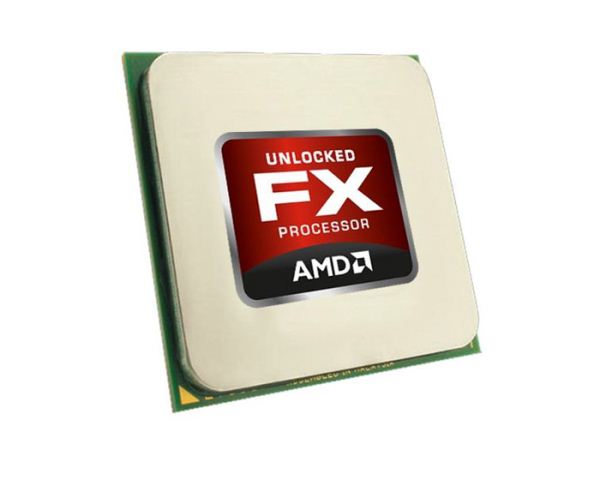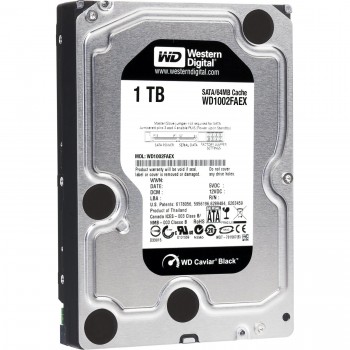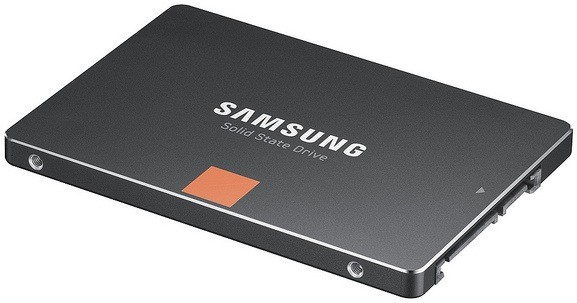Holiday 2012 Workstation Buyer's Guide
by Zach Throckmorton on December 10, 2012 3:20 AM EST- Posted in
- Guides
- AMD
- Intel
- Ivy Bridge
- Piledriver
- Holiday 2012
AMD workstation
 Anand thoroughly reviewed AMD's latest Piledriver-based "Vishera" CPUs upon their launch a few months ago. Priced at $130, the FX-6300 hex-core model costs about as much as Intel's Ivy Bridge-based Core i3-3220. In terms of real-world workstation application performance (the details of which are presented in Anand's review), the FX-6300 bests the i3-3220 in a variety of tasks: Monte Carlo simulations in Microsoft Excel, multi-threaded video editing, software compilation in Visual Studio, and multi-threaded integer workloads such as those used in file compression/decompression. Compared to the i3-3220, the FX-6300's major weakness is its higher power consumption—under load the AMD chip pulls almost twice as much power as Intel's Ivy Bridge-based juice sipper (though in terms of absolute power, we're talking about less than 100W more). That said, Depending on what you're doing with your work computer, the FX-6300 is a relatively inexpensive option worthy of your consideration. You can see a detailed comparison of the FX-6300 to the i3-3220 in CPU Bench.
Anand thoroughly reviewed AMD's latest Piledriver-based "Vishera" CPUs upon their launch a few months ago. Priced at $130, the FX-6300 hex-core model costs about as much as Intel's Ivy Bridge-based Core i3-3220. In terms of real-world workstation application performance (the details of which are presented in Anand's review), the FX-6300 bests the i3-3220 in a variety of tasks: Monte Carlo simulations in Microsoft Excel, multi-threaded video editing, software compilation in Visual Studio, and multi-threaded integer workloads such as those used in file compression/decompression. Compared to the i3-3220, the FX-6300's major weakness is its higher power consumption—under load the AMD chip pulls almost twice as much power as Intel's Ivy Bridge-based juice sipper (though in terms of absolute power, we're talking about less than 100W more). That said, Depending on what you're doing with your work computer, the FX-6300 is a relatively inexpensive option worthy of your consideration. You can see a detailed comparison of the FX-6300 to the i3-3220 in CPU Bench.
ASRock's 970 Extreme3 AM3+ ATX motherboard is a straightforward, fully-featured product that, in my experience, is quite reliable. It offers plenty of expandability for peripherals with its two PCIe x1 and two PCI lanes, and users interested in GPGPU computing will find two PCIe X16 lanes (though when both are populated, one runs at x16 and the other at x4). We're pairing this board with a 16GB kit of basic DDR3-1600 from Corsair, consisting of two 8GB sticks. This leaves two slots open for an easy, drop-in upgrade to 32GB if you deem that a wise use of your money.
 Regarding storage, two of the most reliable products on the market get the nod—Intel's 520 Series 120GB SSD and Western Digital's 1TB Black HDD. Both carry five year warranties from their manufacturers, whereas most SSDs and HDDs carry two- or three-year warranties. The combination of a fast OS and application SSD with a fast, high capacity HDD is a good general solution for most workflows; you might be better off with a single large SSD, or your work might be more cost effectively completed with a tiny SSD (like Intel's 520 Series 60GB) and multiple larger, slower hard drives (like Western Digital's Green 2TB). And of course, don't forget external backup storage!
Regarding storage, two of the most reliable products on the market get the nod—Intel's 520 Series 120GB SSD and Western Digital's 1TB Black HDD. Both carry five year warranties from their manufacturers, whereas most SSDs and HDDs carry two- or three-year warranties. The combination of a fast OS and application SSD with a fast, high capacity HDD is a good general solution for most workflows; you might be better off with a single large SSD, or your work might be more cost effectively completed with a tiny SSD (like Intel's 520 Series 60GB) and multiple larger, slower hard drives (like Western Digital's Green 2TB). And of course, don't forget external backup storage!
BitFenix's Ghost gets our nomination to house everything. Dustin reviewed this sleek-looking case recently, and like him, I've enjoyed building systems in this case. Its thermals are more than up to the task of cooling a higher TDP CPU like the FX-6300. Keep in mind that all of our case suggestions in this buyer's guide are interchangeable, so if you happen to like a case detailed in another build, you can certainly put these parts in that case. Powering everything, we have Antec's Earthwatts 380W. Though Antec has switched OEMs over the course of this product's history, I have now installed this model into over 100 systems in the last few years, and one has failed. In other words, it's about as reliable as a low-cost, mainstream PSU comes.
Finally, this build includes a copy of Windows 7 Professional 64-bit. You can get an overview of the differences between Windows versions at Microsoft and Wikipedia. Some of the more relevant and important differences between Professional and Home Premium are the former's support for more than 16GB of RAM, Windows XP mode, domain join, and integrated backup and restore features.
| Component | Product | Price | Rebate |
| Case | BitFenix Ghost | $100 | |
| Power supply | Antec Earthwatts 380W | $45 | |
| CPU | AMD FX-6300 | $140 | |
| Motherboard | ASRock 970 Extreme3 AM3+ ATX | $85 | |
| RAM | 16GB Corsair Value Select DDR3-1600 | $60 | |
| SSD | Intel 520 Series 120GB | $130 | |
| Hard drive | Western Digital Black 1TB | $110 | |
| Graphics card | Sapphire Radeon HD 5450 1GB | $35 | -$15 |
| Optical drive | Lite-On iHAS124-04 | $18 | |
| Operating system | Windows 7 Professional 64-bit | $137 | |
| Total: | $860 | $845 |
Intel workstation
I consider the next tier up from the AMD FX-6300/Intel Core i3-3220, in terms of workstation productivity, to be the AMD FX-8350/Intel Core i5-3570 tranche. At this price, however, the pendulum swings closer to Intel's CPU—largely because the AMD FX-8350 uses about 100W more under load to sometimes accomplish less actual computational work. That said, be sure to read how the FX-8350 compares to the Core i5-3570; if the AMD chip will be better for your workloads (despite its electrical gluttony), you can use it instead of the FX-6300 in the build above. If your workloads benefit from Hyper-Threading, you should consider stepping up from the Core i5-3570 to the Core i7-3770. You can see how the two Intel CPUs compare once again in CPU Bench.
 Like the AMD FX-6300 workstation detailed above, we're including 16GB for this workstation. The ASUS P8B75-V is a reliable B75 chipset-based board with plenty of room for expansion (such as drop-in expansion to 32GB of RAM). Both PCIe lanes are able to function at x16, though one is a PCIe 2.0 slot and the other is a PCIe 3.0 slot (not that this distinction is particularly important at this point in time). Perhaps the only drawback to the B75 chipset is that it has only one SATA III port, though if you have only one SATA III SSD, this is not an issue.
Like the AMD FX-6300 workstation detailed above, we're including 16GB for this workstation. The ASUS P8B75-V is a reliable B75 chipset-based board with plenty of room for expansion (such as drop-in expansion to 32GB of RAM). Both PCIe lanes are able to function at x16, though one is a PCIe 2.0 slot and the other is a PCIe 3.0 slot (not that this distinction is particularly important at this point in time). Perhaps the only drawback to the B75 chipset is that it has only one SATA III port, though if you have only one SATA III SSD, this is not an issue.
For storage, we're recommending the Samsung 840 Pro. If you follow Anand's SSD reviews, we noted the pre-production firmware resulted in dead drives, but that the production firmware appears to have corrected this issue. Given the track record of the Samsung 830, I have no reservations recommending the 840 Pro for production systems. We're also stepping up the storage capacity with a 2TB rather than 1TB Western Digital Black platter-based drive for this system; though again, only you know how much storage you'll need for your workloads.
I've recommended the Fractal Design Define R4 before, and continue to use it extensively for custom builds. Its combination of good thermals, excellent acoustics, and slick looks make for a very compelling $100 case. Finally, the Seasonic S12II series has an outstanding reputation for supplying clean, reliable power, and the 430W version provides enough juice for the build detailed below as well as any single GPU graphics card on the market, if you're interested in GPGPU computing.
| Component | Product | Price |
| Case | Fractal Design Define R4 | $110 |
| Power supply | Seasonic S12II 430B | $60 |
| CPU | Intel Core i5-3570 | $215 |
| CPU alternate | Intel Core i7-3770 | $300 |
| Motherboard | ASUS P8B75-V B75 ATX | $90 |
| RAM | 16GB Corsair Value Select DDR3-1600 | $60 |
| SSD | Samsung 840 Pro 128GB | $150 |
| Hard drive | Western Digital Black 2TB | $180 |
| Optical drive | Lite-On iHAS124-04 | $18 |
| Operating system | Windows 7 Professional 64-bit | $137 |
| Total (with i5-3570): | $1,020 | |
| Total (with i7-3770): | $1,105 |
On the next page, we step up to a Sandy Bridge E-based workstation.










49 Comments
View All Comments
Kristian Vättö - Monday, December 10, 2012 - link
I don't personally find the Intel SSD 520 to be a good value anymore. Sure, it comes with a 5-year warranty but so does almost all high-end SSDs nowadays. Its performance isn't worth any extra either because to be honest, it's slow compared to other high-end SSDs. Especially if you're dealing with incompressible data, SandForce really isn't the best choice and I think it's important for workstation users to have consistent performance, which SandForce cannot provide.If Samsung SSD 840 Pro is out of reach, I would recommend either Corsair Neutron GTX or Plextor M5 Pro. At 120/128GB, they cost around as much as the Intel SSD 520 but if you go for the 240/256GB model, you'll be able to save a few bucks. Both also come with 5-year warranty if that's a concern.
mrdude - Monday, December 10, 2012 - link
I came in here to post this but I'm glad I'm not the only one.The Intel drives really don't offer anything special anymore, particularly since Corsair's LAMD acquisition. Plextor also offers a 5 year warranty and they've got the best Marvell in-house firmware on the market with rock solid stability and fantastic performance. Since their M3 they've been my SSD of choice and the drives I recommend to everyone, but now it's a toss up between Corsair's Neutron and Plextor's drives. Of course, if we're talking power consumption in a laptop then it's pretty one-sided.
As far as quicksync and video editing goes, it highly depends on the software involved. Some software responds well to CUDA/openCL and blazes through with GPU assist and shows no signs of even slight distortion or muddiness while other software maintains great image quality via fixed-function units like QuickSync. The most consistent as far as image quality goes will always be a straight CPU approach, but that doesn't necessarily mean that it's the only viable solution.
Doctor Z - Monday, December 10, 2012 - link
You do realize that for most users who need power, dual and quad-CPU server motherboards make better workstations. Why didn't you include those Zach? Because they're in the $10,000-$30,000 range fully-loaded?A5 - Monday, December 10, 2012 - link
If that's what you need, you aren't building your own. You're either part of a company that will buy it for you (and therefore your IT department will want something serviceable with a warranty) or you're running your own business (and can deduct the expense) and need something that is rock-solid reliable.JDG1980 - Monday, December 10, 2012 - link
If it doesn't have ECC RAM, it's not a workstation. Period. Not one of the builds showcased in your articles includes this basic feature - an inexcusable omission.Pityme22 - Monday, December 10, 2012 - link
First, you have to identify the programs used by the workstation to even begin commenting. I.e. You dont mention CAD programs which for use of all features require a Quattro or FirePro graphics cards. Anand, I am very surprised that you let this "article" be posted as it is very much below normal AnandTech standards. Shame, Shame.jamesgor13579 - Monday, December 10, 2012 - link
I completely agree with many of the other posters here. If it does not have ECC is isn't a workstation. I work in R&D for a large tech company. There is a reason ALL of our desktops have ECC. RAM just isn't that reliable.Here is an excellent example of why:
I am an ASIC designer. We have to run a lot of simulations of the logic and timing to make sure everything works. Once our design is layed out, modeling all of the timing takes a lot of memory. Dozens of GB just to simulate part of the design. Someone was cheap and built a three "workstations" out of desktop motherboards and 64GB (8x8GB in a socket 2011) non-ECC memory. Well less than a year later when it was crunch time on the project and the machines were running week long simulations, two of them started randomly crashing. Guess what, it was the RAM. Replaced one DIMM and the machine worked again.
If you need your system to work, Non ECC RAM is not OK.
Makaveli - Monday, December 10, 2012 - link
Doesn't that just mean you had a bad stick of memory?And your telling me that can't happen with ECC memory?
smpltn - Monday, December 10, 2012 - link
650D paint chips easilyKevin G - Monday, December 10, 2012 - link
Depending on the task at hand ECC is a requirement. The graphic artist or video editor would likely only encounter a pixel being off color for a memory error. Those types of fields can generally tolerate such errors. The CAD, research or financial markets for example absolutely need to have ECC due to the need for continual data integrity.As such, more consideration should have been put into AMD motherboards (the FX line supports ECC but not all motherboards do) as well as socket 1155/C200 series chipsets for the low end and midrange builds. Even if the use-case doesn't need ECC, I'd have still opted to include such a motherboard with the AMD FX build. High end socket 2011 build I'd recommend the Gigabyte X79S-UP5 motherboard supports ECC memory as it is really based upon the C606 chipset. This motherboard would cover a wide range of workstation uses. Only those wanting dual sockets would have to look else where.
The graphics card choice is also 'interesting'. For simple 2D work, a low end consumer card is more than enough for some use-case scenarios. For things like image editing, getting a low end FirePro or a Quadro would make sense for superior drivers and 30 bit color support. Other use-scenarios are starting to use GPU's for some heavy processing: video editing applications for example for accelerating some effects. High end consumer cards are often equal to midrange workstation cards due to artificially crippling GPGPU performance on the consumer side. Selecting between cards often boils down to specifically what applications the workstation will be running.
Power supply selection is a bit weak. A workstation tends to be expandable and I'd provision some room for future expansion. Upgrading the lowend builds here with a midrange or better consumer GPU would entail a PSU upgrade as well. The article does mention getting bigger PSU's with bigger video cards but I see it wiser to provision a PSU with these possible upgrades in mind before purchasing them. Only with the niche GPGPU workstation area I can see multiple video cards being worth considering so that does put a reasonable upper bound on PSU requirements.
For a workstation I always recommend that a pair of hard drives are setup in a RAID1 array to protect your data in the event of a disk failure. A five year warranty won't help you when your drive is dead and you have to pay for downtime and recreating work from your most recent backup. Speaking of which, including good backup software/external storage and a solid UPS would be wise for a workstation regardless of use-case scenario. When you're using a system for work, you want it to work continuously.